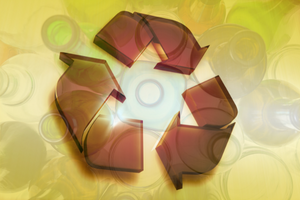Every day across the world, people generate hundreds of tons of glass waste. However, used bottles, jars and perfume bottles can be reused as a result of the recycling process. What does this process look like, and what are the uses of recycled glass?

What is glass?
Before we discuss glass recycling technology, let us answer the basic question of what glass actually is. You should know that glass is:
- amorphous solid,
- a product obtained by melting and subsequent cooling of various mineral and chemical raw materials (such as quartz sand, borax, sodium and potassium feldspar and other raw materials containing substances such as colouring oxides or clarifying oxides),
- one of the oldest raw materials, invented by man several thousand years ago (the first glass melting process was carried out probably in the Middle East or in the Mediterranean countries).
Over the centuries, glass has found many different applications – it is used to produce, for example, packaging, glass, dishes or insulation materials. This raw material is also recyclable.
What does the process of glass recycling consist of?
The process of glass recycling begins with the need to pre-sort and deliver glass containers to such facilities as the Selective Municipal Waste Collection Point (PSZOK). From there, the glass goes to the sorting room. Metal waste, including plugs, lids or caps, are removed on conveyors equipped with electromagnetic separators. The workers at the sorting area pick out all the unnecessary items and raw materials that are not suitable for glass recycling (usually, these include foil or paper bags, etc.). The raw material is transferred to crushers. Once crushed, it is automatically divided into 2 colour groups: transparent and coloured.
Ultimately, the cullet reaches a melting factory, where it undergoes a number of further processing steps, such as:
- re-crushing,
- aggregate cleaning,
- melting in steel furnaces,
- formation of new glass products.
What types of glass are recyclable?
Nowadays, green bins for selective glass waste collection are a common sight in Polish housing estates and companies. What can you throw in the green bins, then? The list of waste types that go in them is relatively short and includes:
- food jars (lids removed),
- beverage bottles,
- cosmetic packaging (cream and perfume bottles).
Certain types of glass are not recyclable, and they include window panes, mirrors, crystal items, light bulbs, lanterns soiled with wax, tableware, lamp shades, monitors, and bottles filled with medicines or other substances. Eyeglasses are also classified as mixed waste – instead of throwing them in the bin, it is a good idea to donate them to the needy, foundations or other entities who organise public collections.

Glass recycling – is it worth the effort? Advantages of glass cullet processing
Should we sort and reprocess glass? Glass recycling is an investment sure to pay off! By reusing glass waste, we save natural resources. These resources include sand, the extraction of which erodes soils and destroys local ecosystems. What deserves particular attention is the fact that glass subjected to heat treatment in a melting furnace requires lower temperatures than new glass during its production. What benefits does this give us? Thanks to this solution, melting factories consume much less energy to heat up and efficiently operate their furnaces.
The cost-effectiveness of glass recycling is also associated with the fact that it is one of the few raw materials that can be reprocessed in many ways. Unlike paper pulp or plastic, glass does not lose any properties during each subsequent processing cycle. Recovered glass materials are also completely safe for the environment and do not release any harmful substances or objectionable odours.
What is recycled glass used for?
Another benefit offered by recycled glass is the variety of its applications. There is a misconception that glass from green bins is used only for the production of bottles for beverages or perfumes. Glass factories and specialised production plants use glass aggregate to produce such items as:
- glass packaging for food, pharmaceutical and chemical industries (bottles, vials, dishes),
- energy-saving light bulb components,
- elements of lamps, fluorescent tubes, lamp shades,
- decorative glassware,
- glass fibres,
- glass wool,
- insulating glass beads,
- ornamental garden chippings.
Undoubtedly, glass aggregate is one of the most promising secondary raw materials today. Scientists are still looking for an answer to the question of what can be produced from glass cullet and how this semi-finished product should be used. Recycled glass is of interest to the representatives of the construction materials, insulation, lighting, home decor and packaging industries who are on the lookout for new and eco-friendly solutions.